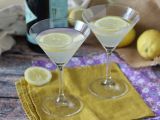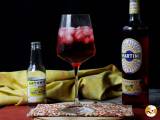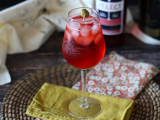A spoon to save sparkling wine? The science behind this myth

Cheers, here's to us, to welcome the new year, to bid farewell to the old one.... During the Christmas season, toasts follow one after the other: with friends, with family, on Christmas Eve, New Year's Eve, Christmas, any occasion is a good occasion! And, of course, the toast has to be with cava, champagne, cider or any other sparkling wine. A sparkling wine with elegant bubbles always gives caché to that special moment. But, when the party is over and the sparkling wine is left over, the real protagonist of this article appears: the spoon that we put in the neck of the bottle. Why does this happen in most homes? A mystery that we are going to solve together and in which we will argue whether it works or not.
Christmas traditions and bubbly myths
Christmas is full of traditions: singing Christmas carols, buying more cookies than we will be able to eat in two years, eating brioche to celebrate Epiphany... and, of course, resorting to the famous trick of the spoon in the open bottle of sparkling wine. The hope is that this simple gesture will preserve the bubbles and maintain, until the next toast, its characteristic effervescent effect. However, we are sorry to disappoint you: according to science, this trick does not work. There is no basis to support this theory.
Why doesn't the spoon work?
Several studies, such as those conducted by experts at the University of Reims (France), have shown that putting a teaspoon in the neck of the bottle has no impact on the preservation of carbon dioxide gas. Why? Because the pressure inside the bottle, once opened, is already compromised. Even if you place a teaspoon, the gas will find its way to freedom. Carbon dioxide (CO₂) is a fluid and will escape just the same.
So where does this myth come from? Probably from a mixture of oral tradition and lack of simple alternatives. In the midst of the holiday rush, it's easy to grab the first thing at hand and trust that it will work.
Methods that do work to preserve bubbles
If you really want to keep this drink festive and bubbly during the holidays, you need a more effective plan than relying on silverware:
- Sparkling Airtight Stoppers: These specialized stoppers are your best ally. Designed to withstand the internal pressure of bubbles, they seal the bottle securely. Holiday bonus: You'll also avoid spills if someone brushes against the bottle during dinner.
- Cold is your best friend: Science tells us that low temperatures slow gas loss. So, after the toast, place the bottle immediately in the fridge or in a bucket with water and ice. If you want to be the most inventive host, add salt to the ice to chill even faster.
- Serve everything at once: Let's face it, sparkling wine tastes better when it's just opened. If you can, pour all the glasses after the initial toast.
A bit of Christmas science
The carbonic gas that gives life to the bubbles is dissolved in the sparkling wine thanks to the pressure inside the closed bottle. When uncorked, that pressure is released, and the gas begins to escape. Without a good sealing system, the bubbles will disappear sooner or later, leaving a flat, sad liquid that no one wants in their glass.
And this is where the spoon has nothing to do. As "elegant" as it may seem, this utensil does not stop the process. What's more, placing it can give a false sense of security that makes you forget to look for real solutions.
This is important:
It is important to remember that regardless of the beverage of choice, or whether you choose to spoon or not, responsible alcohol consumption is critical. Moderation is the key to minimizing the risks associated with its consumption. And you know, if you drink, DO NOT drive.



Comments